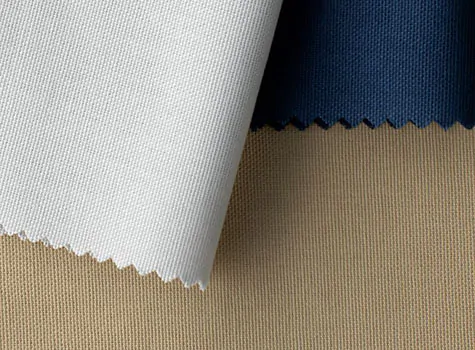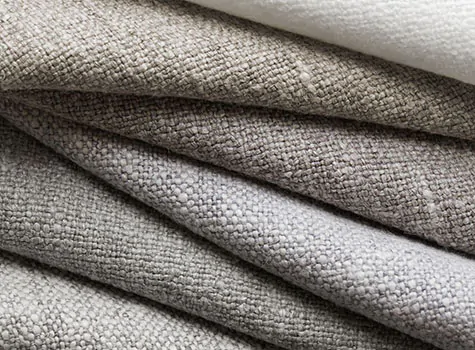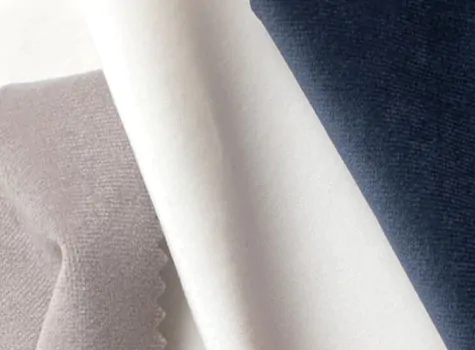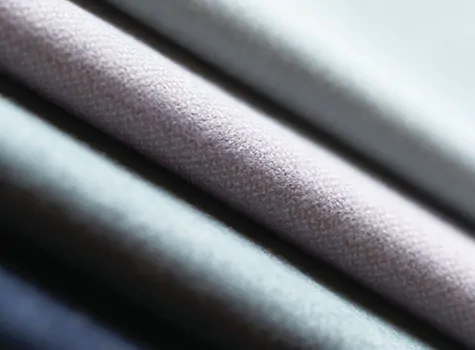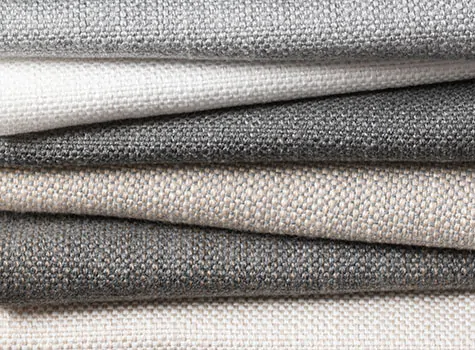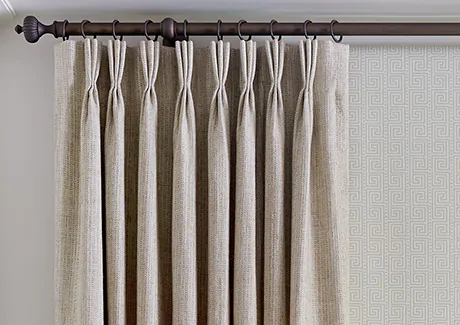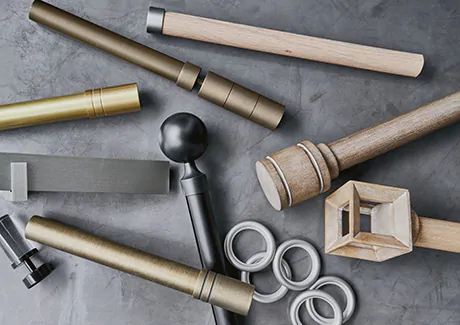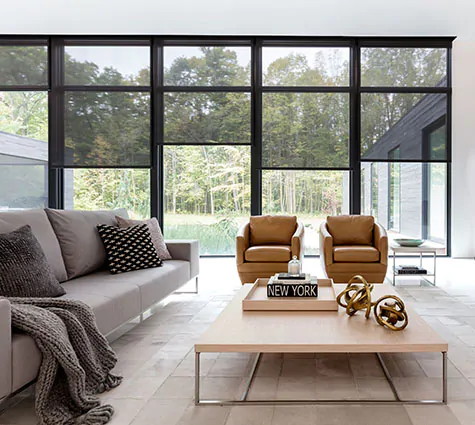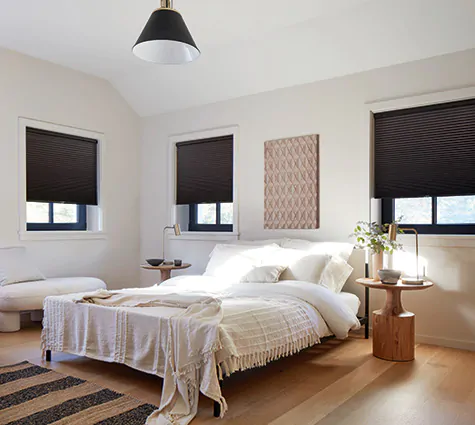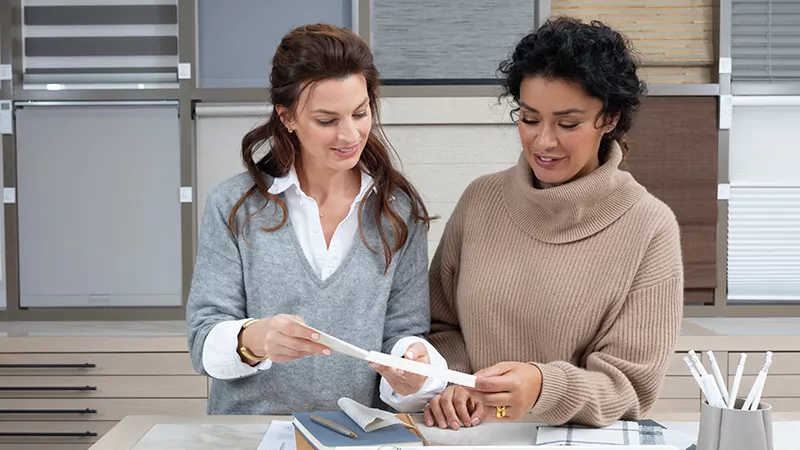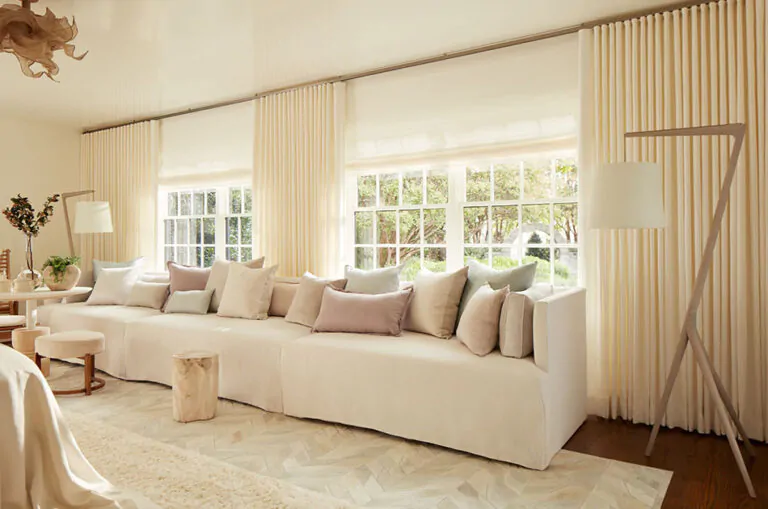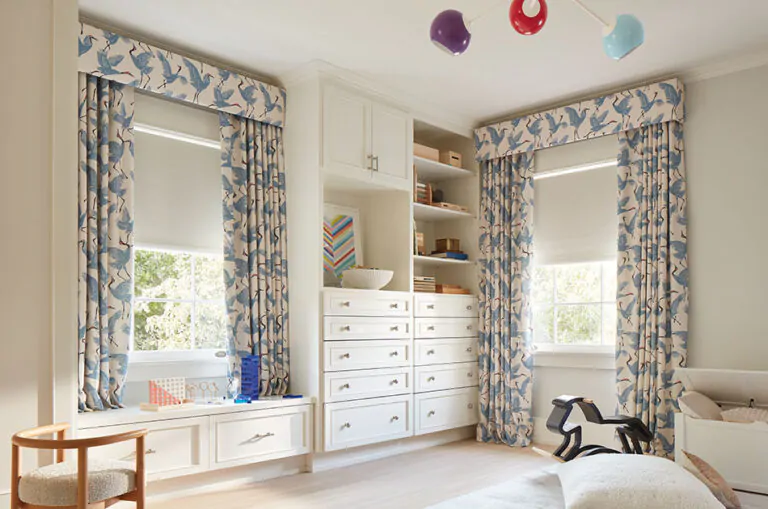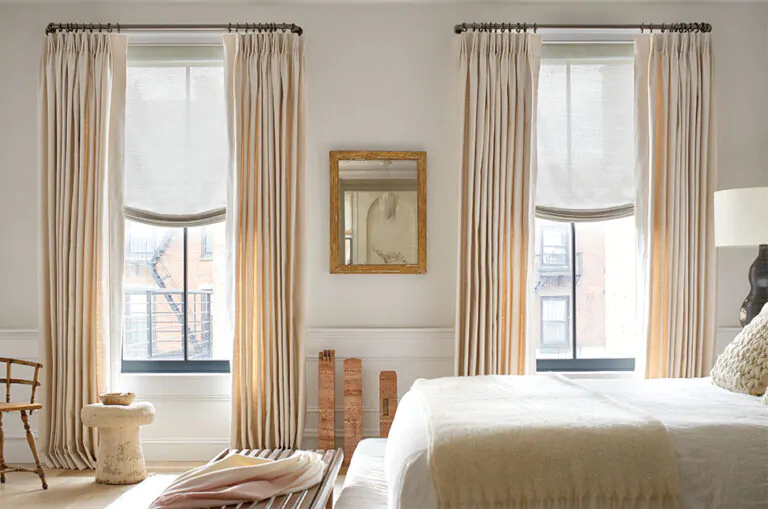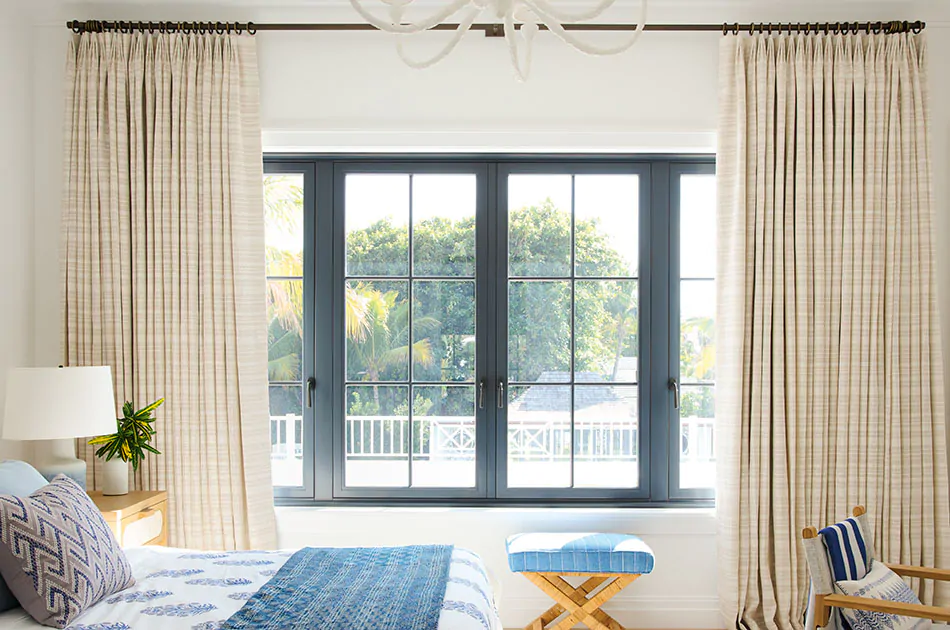
The Best Curtains to Keep Heat Out Year-Round
If you’re looking for curtains to keep heat out, you want to keep your home cooler. Curtains are an excellent choice for insulation — from both the heat and the cold — thanks to their long panels of fabric that trap hot and cold air at your window. However, to optimize the insulating ability of your drapery, it’s important to choose the right customizations. Learn more about how to choose the best curtains to keep heat out.
Cover photo: Tailored Pleat Drapery, Victoria Hagan Tidal Line in Natural, design by Victoria Hagan
How to Choose the Best Curtains to Keep Heat Out
To choose the best curtains for your needs, it’s important to understand the specific features that contribute to their performance. Learn how to customize your curtains for heat management with the following steps that cover fabric type and color choice, insulation, panel length and more.
In this section
Step 1: Choose Heavyweight Fabrics
Denser, thicker fabrics are better suited to blocking heat than lightweight fabrics. Their tight weaves and weight effectively block air from the outdoors and trap it at your window for effective heat management.
Step 2: Opt for White or a Light Color
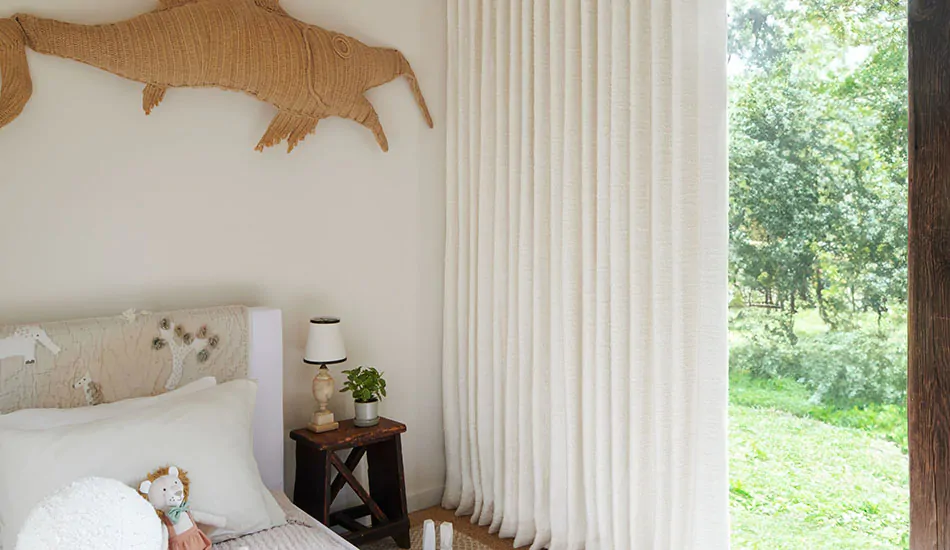
Light colors reflect sunlight, while darker colors absorb light and convert that light into heat. Choosing white or other similarly light colors can further improve the heat blocking performance of your drapery.
Explore a few white and light options from the heavyweight fabric collections mentioned above to get started.
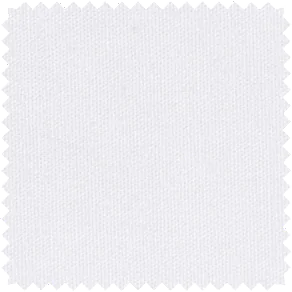
CanvaS IN
oPTIC wHITE
A thick cotton fabric with great durability and a soft touch.
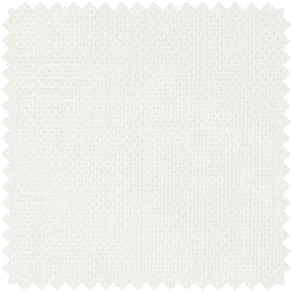
lUxE lINEN
IN oSYTER
A heavyweight linen with a luxe look and soft feel.
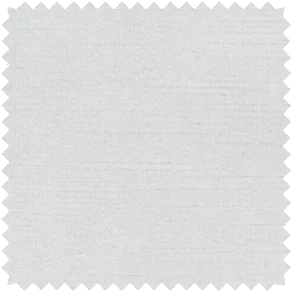
vELVET
IN wHITE
A plush, luxurious velvet with a soft, inviting touch.
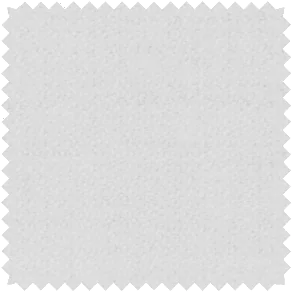
Wool Flannel
in Glacier
A thick luxe wool with a brushed texture for a tactile experience.
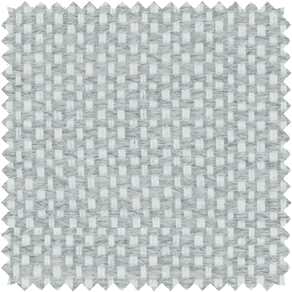
Sunbrella Alma
in Dove
A heavyweight fabric with durability and a linen-like texture.
Step 3: Add Lining for Better Insulation
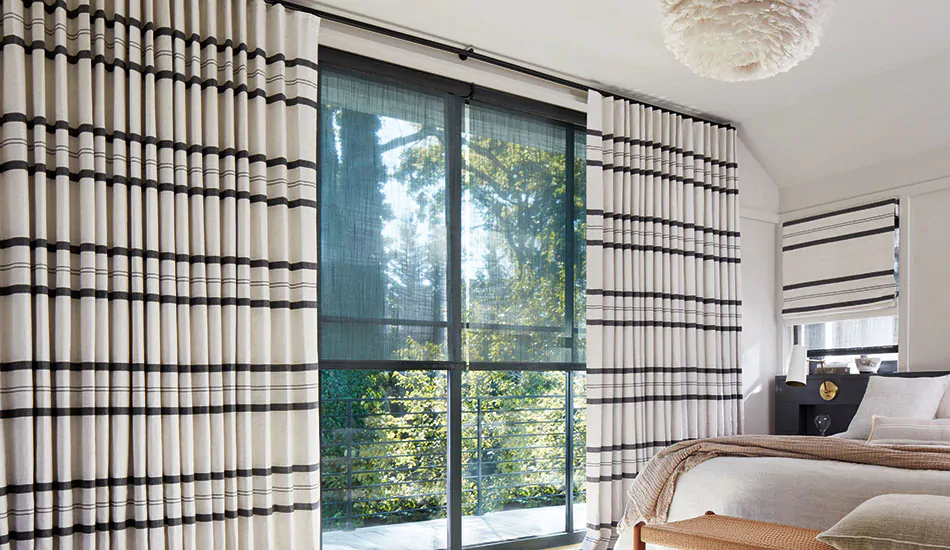
Lining refers to fabric added to the backside of your drapery panels. Lining is typically made with white, or off-white fabric, often polyester, that reflects light. If you add lining, you can choose a darker color without your drapery absorbing too much heat from the sun. Plus, lining helps block more light, with blackout lining giving you the best light-blocking effect, which means less of the sun’s rays to warm your home.
Step 4: Choose Floor-Length Drapery & Hang Them High & Wide
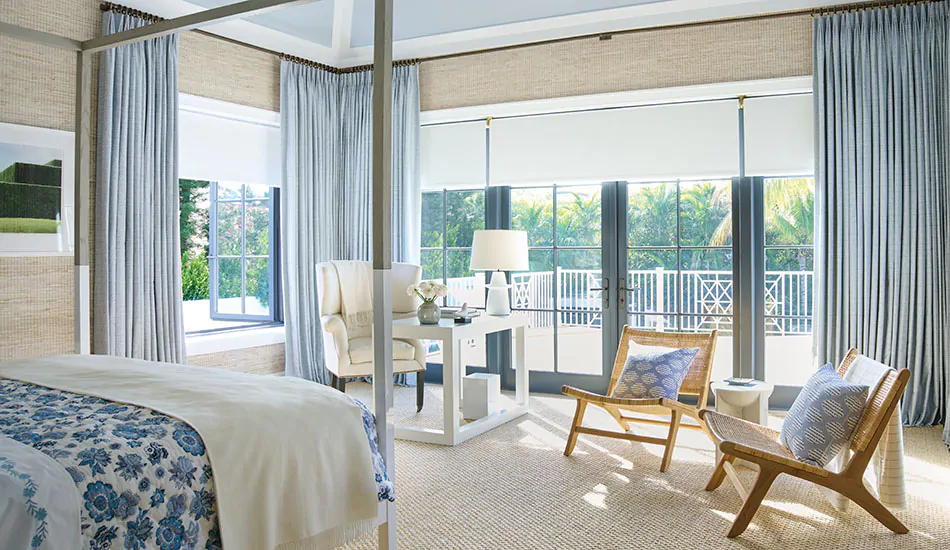
Taller, longer panels of drapery provide better coverage over your window by blocking airflow at the top and bottom of your window. For the best insulation for both the heat and the cold, follow these best practices:
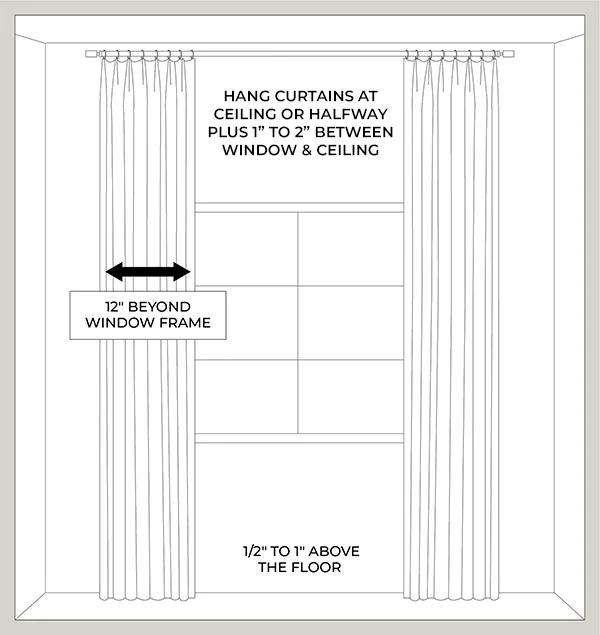
- Hang your drapery high – A little more than halfway between the top of the window and ceiling is a good rule of thumb. Or, about 8-10 inches above the window frame if you have very tall ceilings. Since heat rises, this approach is especially effective at trapping the hot air coming in from the top of your window.
- Hang your drapery wide – Install your curtain rod so it extends about 12 inches on each side of your window. This allows full coverage over the sides of your window to block heat more effectively. It also allows you to pull your drapes fully off the window if you desire.
- Choose floor-length drapery – Floor-length drapery, where the panels float above or just graze the floor, more effectively traps hot air at your window, keeping the rest of your interior more comfortable.
Not only are these best practices great for heat insulation, but they’re also aesthetically pleasing. Hanging your drapery high and wide and choosing a length that grazes the floor creates a sense of height and spaciousness in your room. The tall, wide panels also make your window seem larger.
Step 5: Consider Functionality
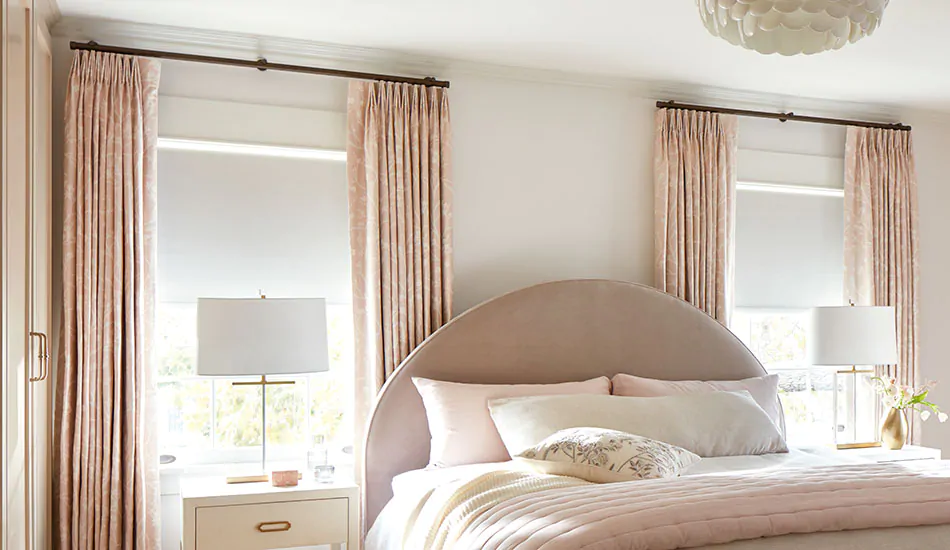
When thinking about curtains to keep heat out, functionality is an important piece to consider. You’ll likely want to be able to pull your curtains closed easily to block heat and open them just as easily if there’s a cool breeze. Choosing functional drapey is all about selecting the right pleat style and hardware.
Wondering if there are other options beyond curtains to keep heat out? Several other window treatments can help mitigate heat buildup in your home for a more temperate climate. Learn more about other window treatments that can help block heat.
Heat-Blocking Alternatives to Curtains
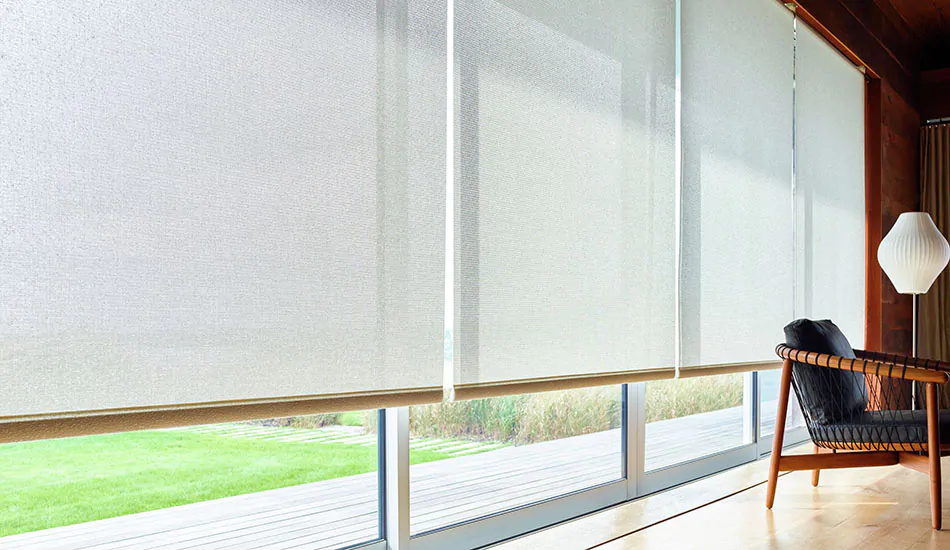
Beyond curtains to keep heat out, there are several other window treatments you can choose from that may better suit your style or application. While all window treatments will help to some degree with blocking heat, some are better than others. For the best heat management, Solar Shades and Cellular Shades are your best bet.
Find the Perfect Curtains to Keep Heat Out
With a better understanding of how to choose the best curtains to keep heat out — as well as insight into alternatives beyond curtains — you’re ready to consider making your final selections. Schedule a free design consultation at your nearest showroom, where you’ll be able to explore all your product options in interactive displays and connect with an expert Design Consultation. During your consultation, your Design Consultant will work to understand your unique needs and style preferences to guide you toward the perfect window treatment solution. Plus, they’ll be able to place your order for you when you make your final selections for a smooth ordering process.
